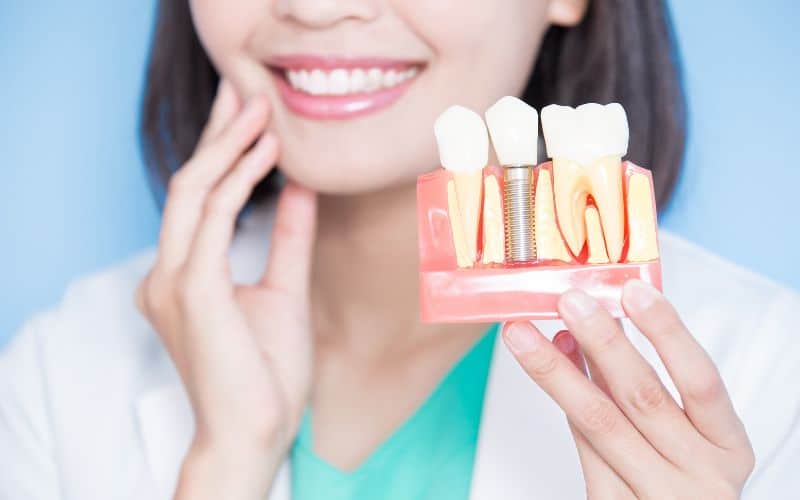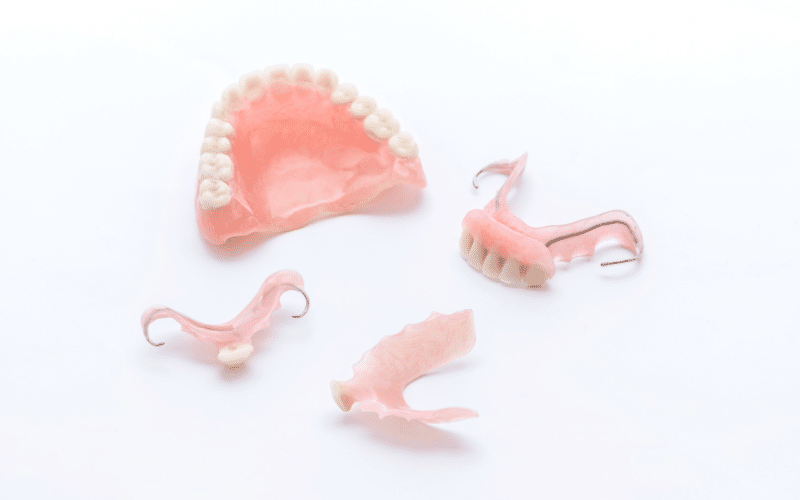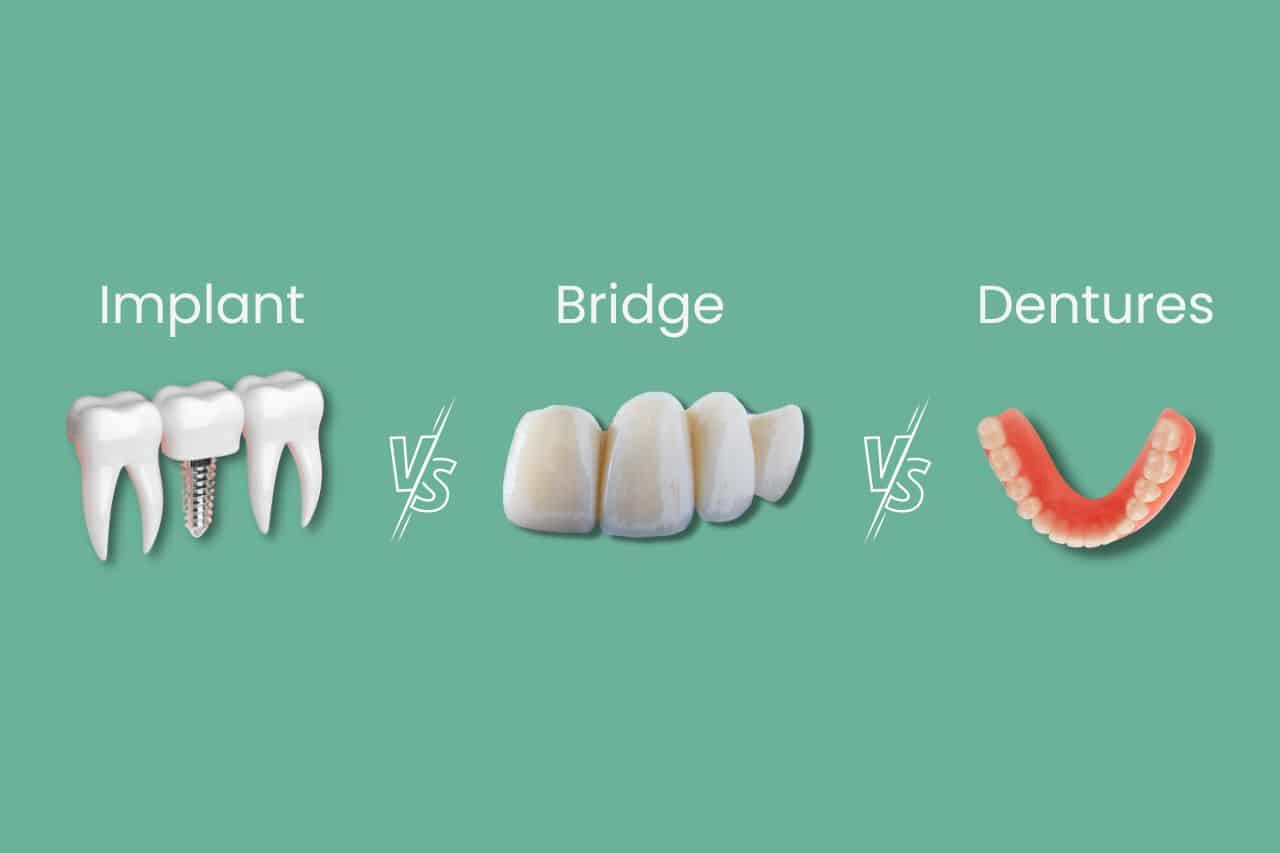Dental Implant Alternatives: Think About These!
Dental implants are often the first option when it comes to replacing missing teeth. But they may not be the best choice for everyone. It’s important to know that there are also dental implant alternatives for people who are worried about prices, want less invasive methods, or just want to try different options. In this article, we’ll dive deep into these compelling alternatives that are certainly worth considering. The world of dentistry provides a plethora of solutions to restore your smile and overall oral health, assuring the perfect fit for your unique needs.
In This Article:
- What Are Dental Implants?
- What Are The Alternatives To Dental Implants?
- Can You Also Do Nothing, In Case Of Tooth Loss?
What Are Dental Implants?
Dental implants are advanced replacements for missing teeth that provide a long-term solution. Their base is small titanium posts that are surgically placed in the jawbone, acting as artificial tooth roots. We use dental implants when someone has lost teeth due to decay, injury, or other dental problems.

These implants offer several benefits, such as improving appearance, making it easier to chew and speak, and preserving the jawbone structure. With proper care, dental implants can last a lifetime. They’re increasingly popular*.
However, there are a few things to consider. For successful implant placement, there needs to be enough healthy jawbone. Sometimes, additional bone grafting is needed. The process involves multiple visits and a healing period before the final tooth restoration is attached. Dental implants can be more expensive compared to other tooth replacement options. Despite this, their many advantages make dental implants a popular choice for people seeking to restore a more natural look and function of their teeth.
What Are The Alternatives To Dental Implants?
Dental implants are more or less a permanent solution. There may be reasons you’re looking for alternatives. So when it comes to dental implant alternatives, think about these.
1. Dental bridges

Dental bridges are an alternative option to dental implants, serving as replacements for missing teeth. Unlike implants, which are surgically placed in the jawbone, bridges consist of artificial teeth that are supported by adjacent natural teeth or dental implants. They ‘bridge’ the gap created by missing teeth, restoring both appearance and functionality.
There are several types of dental bridges available:
Classic bridge
This traditional bridge involves creating a crown for the teeth on either side of the gap and placing an artificial tooth (pontic) in between. The crowns are then bonded to the natural teeth, holding the pontic securely in place.
Maryland bridge
With this type of bridge, there’s no need to prepare adjacent teeth for crowns. Instead, the artificial tooth is crafted with small ‘wings’ on either side. These wings are securely bonded to the backs of adjacent teeth using a robust dental adhesive. This eliminates the need for anesthetic injections. The structure of the adjacent teeth also remains intact. Similar to a classic bridge, the process typically takes around five days from your initial appointment to the fitting of your new Maryland bridge.
Resin-bonded bridge
The resin-bonded bridge functions similarly to other dental bridges, with one key difference. Instead of relying on adjacent teeth for support, the new tooth is attached using a special dental resin. The resin is carefully placed behind the neighboring teeth, securely holding the false tooth in position. This innovative procedure is less invasive and offers the added benefit of being reversible if needed.
Pros and cons of dental bridges
There are some benefits to dental bridges as an alternative to dental implants:
- Dental bridges are a cost-effective option compared to dental implants.
- The procedure is less invasive, with a shorter healing time.
- Bridges restore your smile’s appearance and functionality, making chewing and speaking easier.
- They help maintain proper dental alignment, preventing the shifting of surrounding teeth.
Of course, there are downsides too:
- Adjacent teeth require some enamel removal for crown placement.
- Bridges have a shorter lifespan than dental implants, typically requiring replacement every 10-15 years.
- Proper oral hygiene is crucial to avoid issues like decay or gum disease around the bridge.
You may be interested in this article: Dental Bridge Vs Implant: Which Option Is Best For You?
2. Dentures

When it comes to restoring missing teeth, removable dentures offer a versatile and affordable solution. These removable appliances offer a practical alternative to dental implants, providing flexibility and convenience. Whether you need a complete set of artificial teeth with full dentures or a solution for a few missing teeth with partial dentures, removable appliances can restore your smile and enable you to chew, speak, and, well, look better.
It works when all teeth are missing or just a few:
Full dentures
When all teeth are missing, full dentures are a good option. These removable appliances consist of a complete set of artificial teeth mounted on an acrylic or metal base. They fit comfortably over your gums, providing a natural-looking smile and enabling you to chew and speak comfortably.
Partial dentures
When only a few teeth are missing, partial dentures can quite literally bridge the gap. As in full dentures, they consist of artificial teeth attached to a metal or acrylic framework that clasps onto your existing teeth and your gums.
The pros and cons of dentures
As always, there are pros and cons to full and partial dentures. Some benefits:
- Removable appliances are generally more affordable compared to dental implants.
- They offer a non-invasive solution, requiring no surgical procedures.
- Removable appliances can provide immediate restoration for your smile.
- They are easily adjustable and can be adapted as your dental needs change over time.
However, there are a few downsides as well:
- Removable appliances may require periodic adjustments for a comfortable fit.
- They can sometimes affect speech or cause mild soreness during the adjustment period. Sometimes you can see where they fit onto the gum, as well.
- Daily removal and cleaning of the appliances are necessary to maintain oral hygiene.
Dental implant alternative based on prevention: gum disease treatments
Gum disease has a significant impact on oral health. If left untreated, it can have devastating consequences, including tooth enamel deterioration, decay, and the potential for tooth loss. As we look at various alternatives for dental implants, it becomes clear that gum disease treatment plays a crucial role in restoring oral health and preventing further tooth loss. By addressing gum disease and preserving natural teeth, you can maintain a solid foundation for other restorative treatments, such as dental bridges or partial dentures.
Gum disease treatments may include:
- Scaling and root planing. An easy, non-surgical procedure, that involves a thorough cleaning of the teeth and roots to remove plaque and tartar buildup.
- Periodontal surgery. In cases where gum disease has advanced significantly, periodontal surgery may be necessary. This surgical procedure involves accessing the gums and underlying bone to remove infected tissue, reshape the gums, and promote gum reattachment. It aims to reduce pocket depth and create a healthier oral environment.
- Gum grafting. For people with receding gums due to gum disease, gum grafting offers a solution. This procedure involves taking tissue from another area of your mouth, such as the roof, and grafting it onto the affected gums. Gum grafting helps to restore gum tissue, improve gum appearance, and protect exposed tooth roots.
Can You Also Do Nothing, In Case Of Tooth Loss?
A common question that arises when faced with tooth loss is whether doing nothing is a viable option. Understandably, some people may feel hesitant about seeking dental treatment due to various reasons, including concerns about cost or aversion to dental procedures. However, you may want to consider the potential ramifications of ignoring tooth problems and leaving the gap untreated.
When dental issues, such as cavities or infections, are left unaddressed, they can escalate into severe pain and significantly impact overall dental health. Furthermore, the untreated condition can necessitate more extensive dental care in the future, leading to increased expenses and potential complications. As dentists, we want to prevent this from happening.
Opting to remove a tooth without replacing it can also have consequences. Without the support of a tooth, the surrounding gums, jawbone, and adjacent teeth may start to deteriorate over time. This erosion can result in more significant problems, such as misalignment, bite issues, and even further tooth loss. Addressing these complications later on may require more complex and invasive surgical procedures to restore dental health.
While the decision to pursue dental treatment is a personal one, it’s important to weigh the potential long-term effects of doing nothing. Don’t hesitate to book a consultation with us to know more about the dental implant alternatives available. Rest assured that during and after surgical procedures, anesthetics and painkillers are used to ensure your comfort. Although some discomfort may be experienced, effective pain prevention measures are in place. Leaving a rotten tooth or cavity untreated can result in more pain in the long run.
